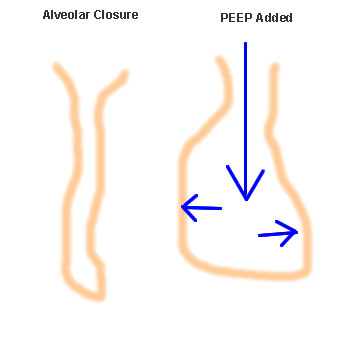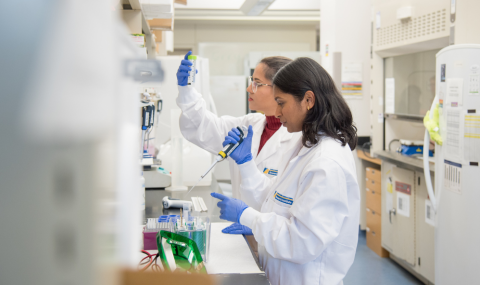|
CONTINUOUS POSITIVE AIRWAY PRESSURE (CPAP) The alveoli are the terminal segments of the airway. Certain types of lung disease can cause areas of alveoli to collapse. Fluid that collects around the lung is one common reason for alveolar closure. When alveoli collapse, fewer oxygen molecules are able to enter the bloodstream, eventually causing a reduction in the blood oxygen level. Adding a steady and low level of positive pressure into the breathing passage can prevent some of the alveolar collapse and help to reopen collapsed alveoli. This is achieved by maintaining a minimum level of airway pressure at all times. Continuous Positive Airway Pressure (CPAP) or Positive End Expiratory Pressure (PEEP) are very similar therapies. Both techniques prevent the airay pressure from falling below a minimum level. We call the therapy PEEP if the patient is on mechanical ventilator. If the patient is breathing without any help from the ventilator, we call the therapy CPAP. PEEP or CPAP helps to reopen alveoli, making it easier for the patient to breathe. PEEP or CPAP also allows oxygen to reach more alveoli. Consequently, PEEP or CPAP increases the oxygen levels in the blood. Most patients on a ventilator will have a PEEP of 5 cmH2O. This is generally used to make it easier to breathe through a breathing tube. Higher levels are required when the lung disease becomes more severe. |
Image 1: Re-expansion of collapsed alveoli with PEEP |
|
|
|
|
|
|
|
|
|
|
|
Last Reviewed: October 23, 2014




